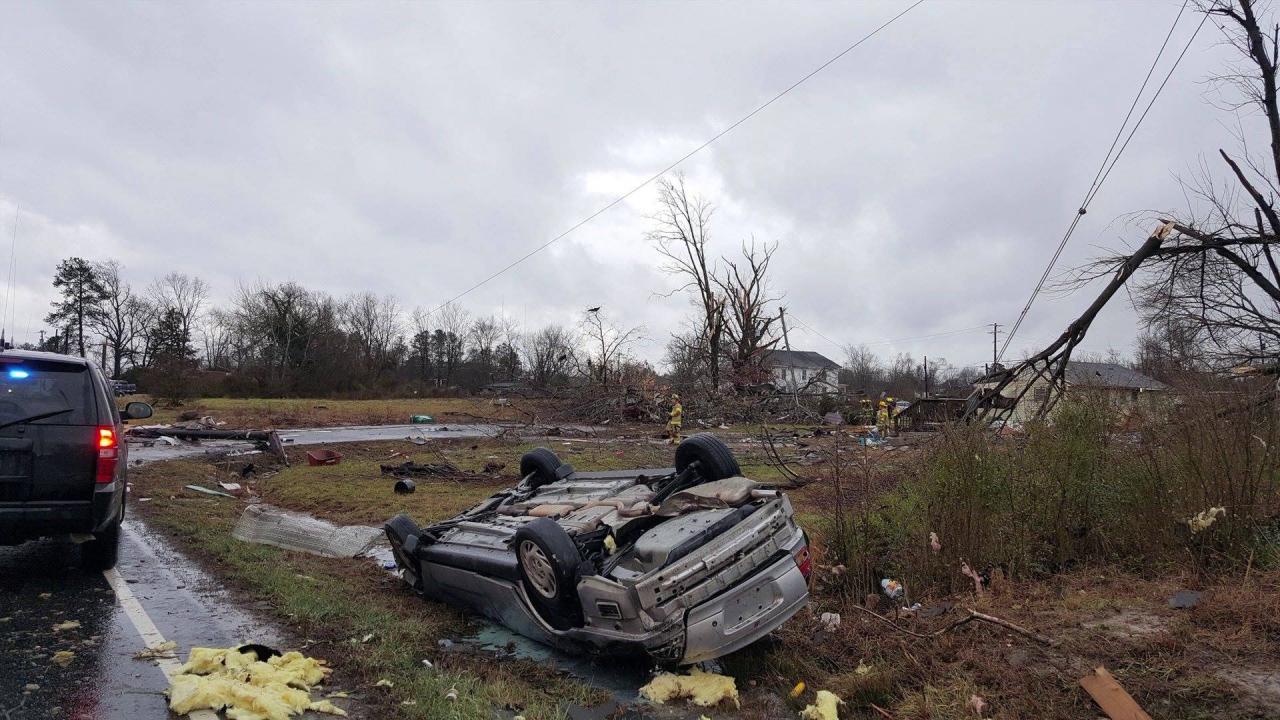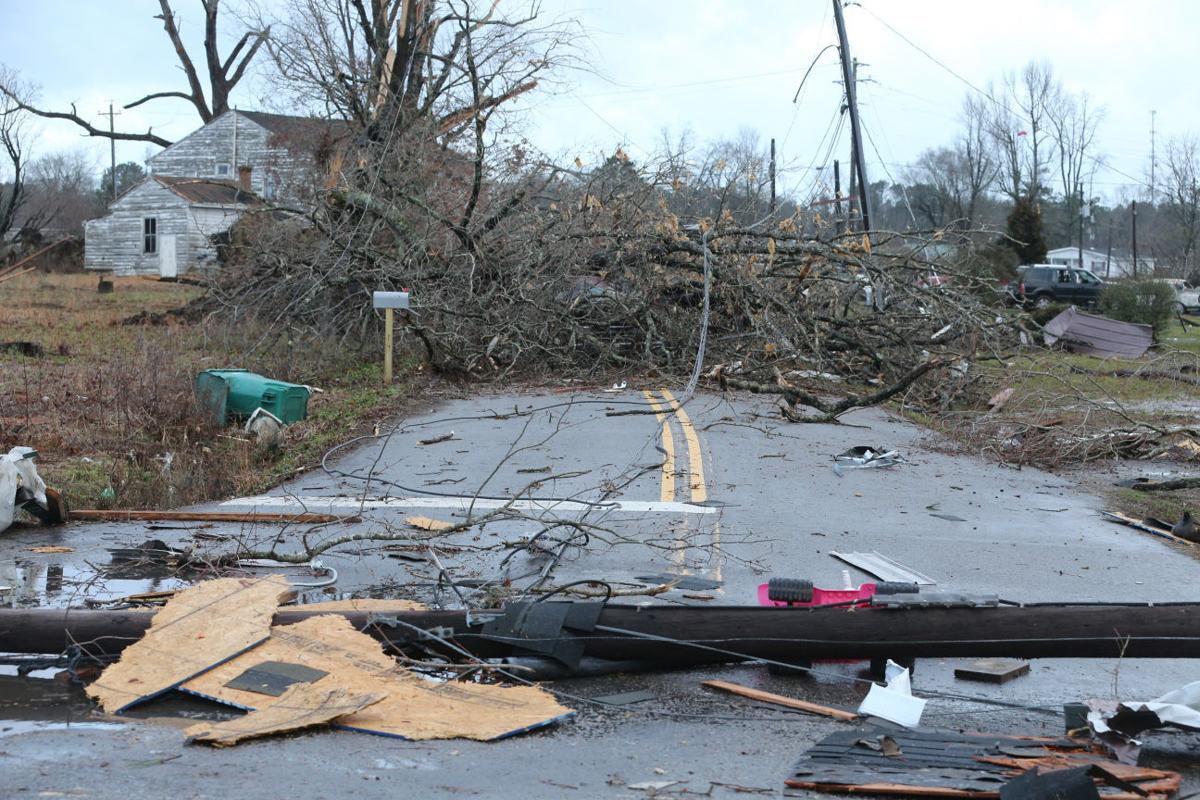
The Waverly tornado, a destructive force of nature, tore through the community, leaving behind a trail of destruction and shattered lives. Its formation, path, and intensity left an unforgettable mark, while the meteorological conditions that fueled its development provide valuable insights into the complexities of severe weather.
The impact of the tornado was far-reaching, causing widespread damage to property and infrastructure. Homes were reduced to rubble, businesses were decimated, and the community’s infrastructure was severely compromised, disrupting essential services and leaving residents reeling.
Event Overview
On April 27, 2011, a devastating tornado tore through the town of Waverly, Alabama, leaving behind a trail of destruction and heartbreak. The tornado, which was part of a larger outbreak that spawned multiple tornadoes across the southeastern United States, formed as part of a supercell thunderstorm and rapidly intensified as it crossed the state line from Mississippi into Alabama.
Meteorological Conditions
The meteorological conditions that contributed to the formation and intensity of the Waverly tornado were complex and varied. A combination of warm, moist air from the Gulf of Mexico and cold, dry air from the north created an unstable atmosphere that was conducive to thunderstorm development.
A strong jet stream provided the necessary wind shear to support the formation of rotating updrafts, which ultimately led to the development of the tornado.
Impact on the Community
The Waverly tornado struck with little warning, leaving residents with little time to seek shelter. The tornado caused widespread damage to property and infrastructure, destroying homes, businesses, and public buildings. The tornado also claimed the lives of 25 people and injured dozens more.
Damage Assessment

The Waverly tornado caused an estimated $200 million in property damage, making it one of the costliest tornadoes in Alabama history. The tornado destroyed or severely damaged over 500 homes, as well as numerous businesses and public buildings. The tornado also caused significant damage to the town’s infrastructure, including power lines, water mains, and roads.
Types of Buildings Affected
The Waverly tornado caused damage to a wide variety of buildings, including residential homes, commercial buildings, and public infrastructure. The tornado’s winds were strong enough to completely destroy some buildings, while others were left with only minor damage. The tornado also caused significant damage to mobile homes, which are particularly vulnerable to high winds.
Economic Impact
The Waverly tornado had a significant economic impact on the community. The cost of repairing and replacing damaged property and infrastructure is estimated to be in the millions of dollars. The tornado also caused significant business disruptions, as many businesses were forced to close temporarily due to damage or power outages.
Emergency Response

In the aftermath of the Waverly tornado, local, state, and federal agencies quickly responded to provide assistance to the community. First responders, including firefighters, police officers, and emergency medical personnel, worked tirelessly to search for survivors, rescue the injured, and provide medical care.
State and federal agencies also provided assistance, including funding for disaster relief and recovery efforts.
Challenges Faced
First responders and emergency management teams faced a number of challenges in the aftermath of the Waverly tornado. The tornado’s widespread damage made it difficult to access some areas, and downed power lines and debris created additional hazards. The large number of injured people also strained the resources of local hospitals.
Effectiveness of Response, Waverly tornado
Despite the challenges, the emergency response to the Waverly tornado was generally considered to be effective. First responders were able to quickly reach the affected areas and provide assistance to those in need. State and federal agencies also provided timely and effective support.
However, some critics have argued that the response could have been improved by providing more resources to the community in the days and weeks following the tornado.
Recovery and Rebuilding
The recovery and rebuilding process in Waverly has been a long and challenging one. In the immediate aftermath of the tornado, the community came together to help each other clean up the debris and begin the process of rebuilding. Local, state, and federal agencies also provided assistance, including funding for disaster relief and recovery efforts.
Challenges and Successes
The recovery and rebuilding process in Waverly has been marked by both challenges and successes. One of the biggest challenges has been the lack of affordable housing. Many of the homes that were destroyed by the tornado were low-income housing, and many of the residents who lost their homes have struggled to find affordable housing in the aftermath of the disaster.
Despite the challenges, the community of Waverly has made significant progress in rebuilding. New homes and businesses have been built, and the town’s infrastructure has been repaired. The community has also come together to create new programs and initiatives to help those who were affected by the tornado.
Long-Term Impacts
The Waverly tornado has had a lasting impact on the community. The tornado destroyed or damaged homes, businesses, and public buildings, and it also claimed the lives of 25 people. The tornado also caused significant economic damage, and the community is still working to recover.
The tornado has also had a psychological impact on the community, and many residents are still struggling to come to terms with the loss and destruction that they experienced.
Final Summary: Waverly Tornado
In the aftermath of the Waverly tornado, emergency response efforts were swiftly deployed, with local, state, and federal agencies working tirelessly to provide aid and support to the affected community. The challenges faced by first responders and emergency management teams were immense, but their dedication and professionalism ensured that critical assistance reached those in need.
The recovery and rebuilding process in Waverly is ongoing, with the community demonstrating resilience and determination in the face of adversity. Challenges remain, but the spirit of collaboration and support among residents, government agencies, and volunteers is driving the recovery forward, promising a brighter future for the community.
Question Bank
What caused the Waverly tornado?
The Waverly tornado was caused by a combination of meteorological factors, including strong wind shear, instability, and moisture.
What was the intensity of the Waverly tornado?
The Waverly tornado was an EF4 tornado, with winds reaching speeds of up to 175 miles per hour.
What was the impact of the Waverly tornado on the community?
The Waverly tornado caused widespread damage to property and infrastructure, leaving many residents homeless and businesses destroyed.





